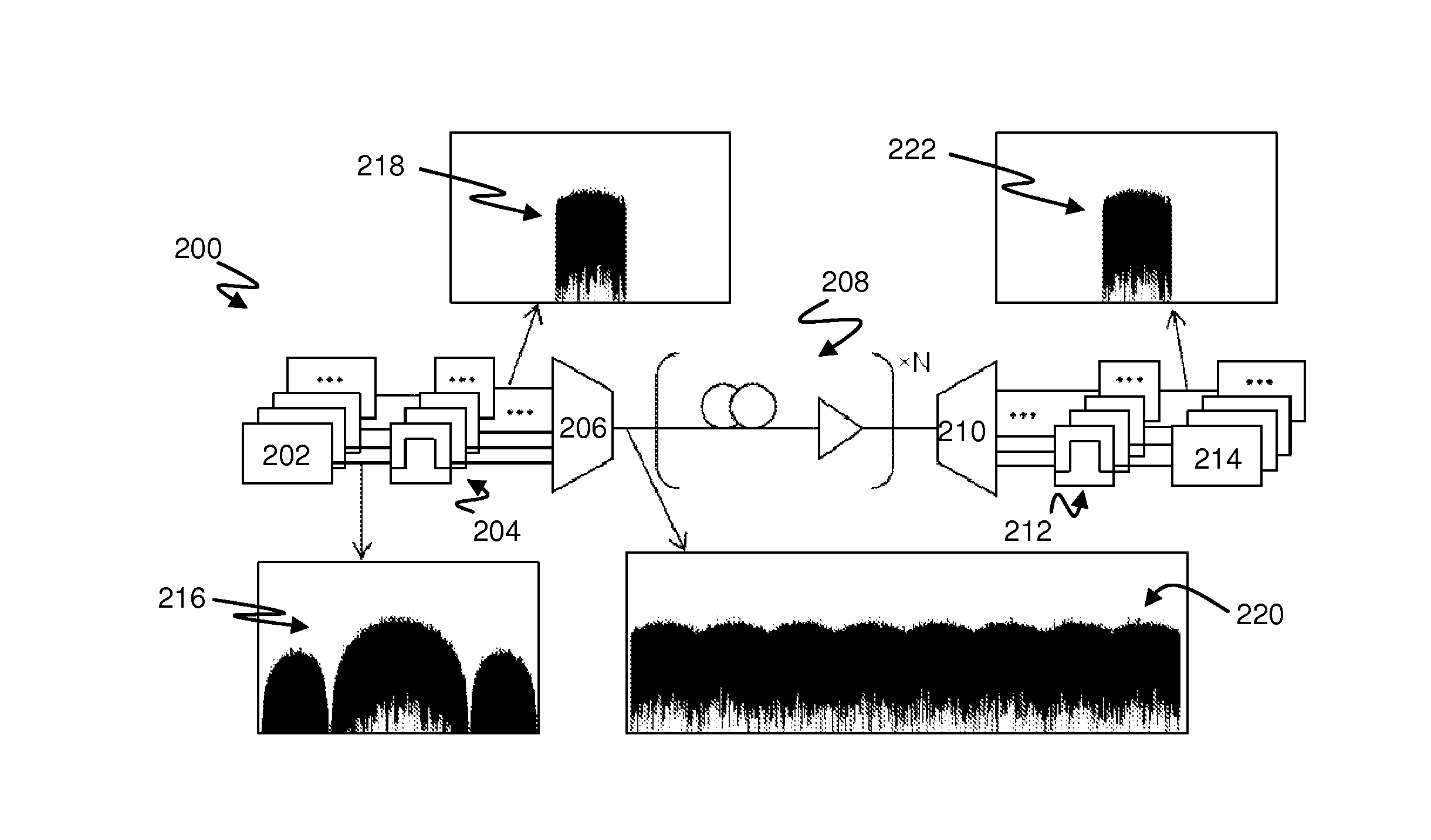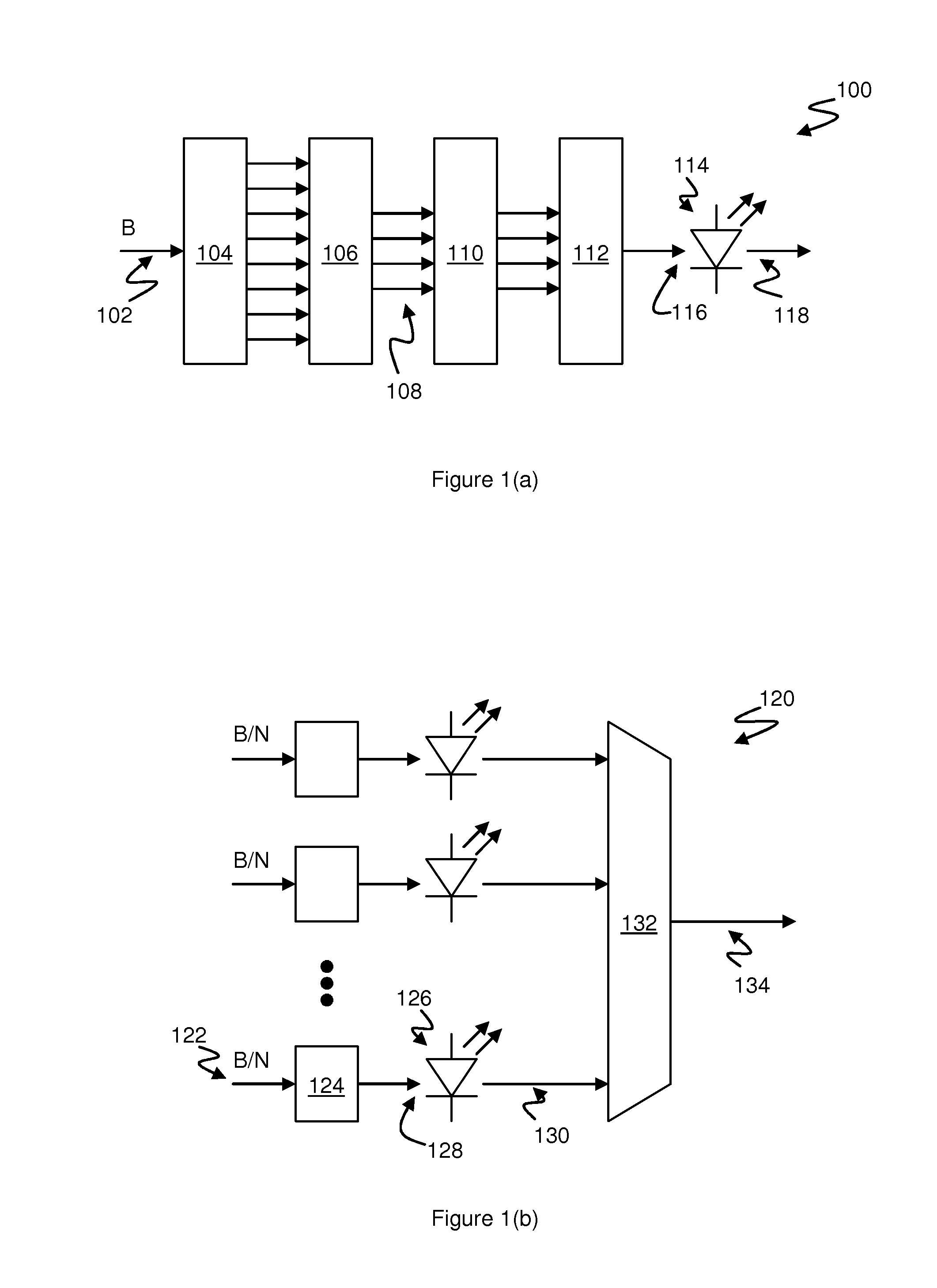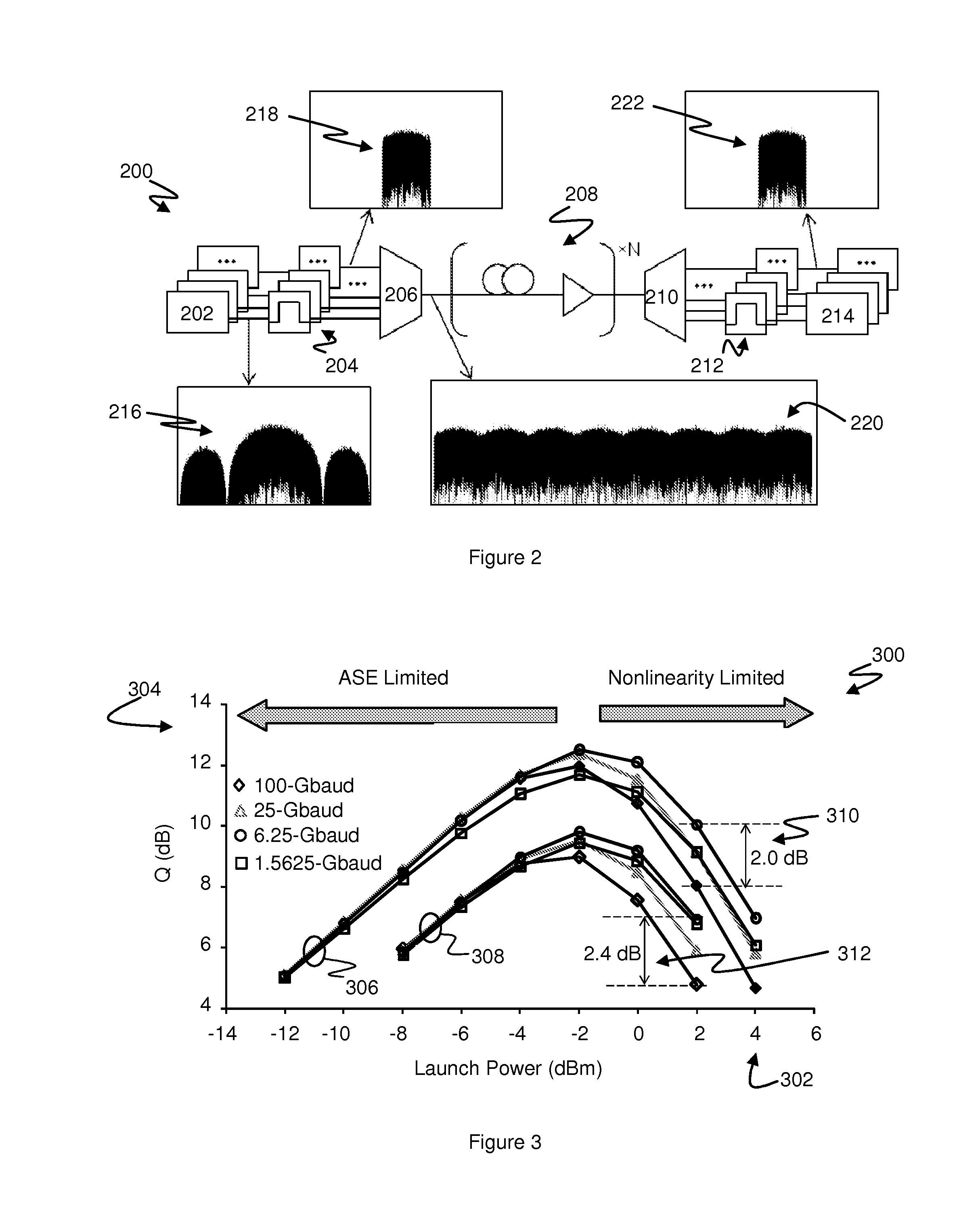Optical OFDM transmission
a transmission and optical technology, applied in the field of optical communication systems, can solve the problems of reducing the available osnr, excessive distortion, and the ultimate limit of the transmission capacity and/or reach, and achieve the effect of improving the nonlinear propagation performance of the transmitted signal
- Summary
- Abstract
- Description
- Claims
- Application Information
AI Technical Summary
Benefits of technology
Problems solved by technology
Method used
Image
Examples
Embodiment Construction
[0045]FIG. 1(a) is a block diagram illustrating an optical transmitter 100 according to one embodiment of the invention.
[0046]The transmitter 100 receives as input a serial information signal 102 having a predetermined bit-rate B, and comprises a multiplexed signal generator including a serial-to-parallel converter 104, a subcarrier modulator 106, a frequency-time transformer 110 and a multiplexed output processor 112.
[0047]The serial-to-parallel converter 104 provides a block of parallel digital inputs to the subcarrier modulator 106, which comprises a plurality of mapping units for generating a corresponding plurality of data symbols, each of which is generally a complex value encoding a number (b) of the input information bits 102. In general, each data symbol may encode more than one information bit, so that the number (N) of outputs 108 from the subcarrier modulator 106 is less than the number of parallel bit inputs. Symbols are generated at the outputs 108 at a symbol rate (S)...
PUM
 Login to View More
Login to View More Abstract
Description
Claims
Application Information
 Login to View More
Login to View More - R&D
- Intellectual Property
- Life Sciences
- Materials
- Tech Scout
- Unparalleled Data Quality
- Higher Quality Content
- 60% Fewer Hallucinations
Browse by: Latest US Patents, China's latest patents, Technical Efficacy Thesaurus, Application Domain, Technology Topic, Popular Technical Reports.
© 2025 PatSnap. All rights reserved.Legal|Privacy policy|Modern Slavery Act Transparency Statement|Sitemap|About US| Contact US: help@patsnap.com



